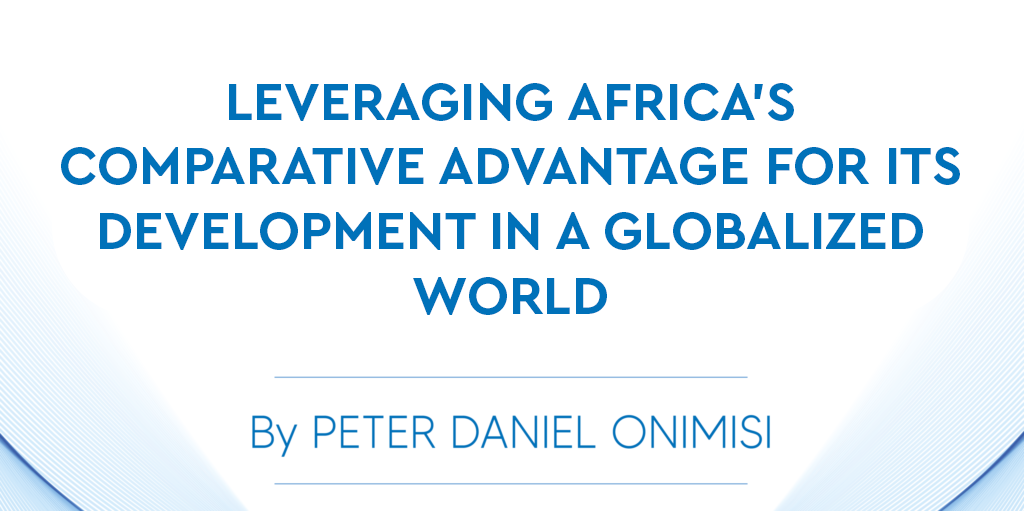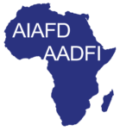
PETER DANIEL ONIMISI (Doctorat.) (Ph.D.)
Introduction
Since independence from colonial domination in the 1960s, Africa’s economic performance has been relatively underwhelming. It is noteworthy that Africa grew more quickly than other developing regions of the world during the first ten years of independence. However, the continent was severely set back in the late 1970s, and this stagflation and recession continued into the 1980s and 1990s. This is largely due to Africa’s role in the global economy, which is most evident in the continent’s lopsided trade relations, insufficient resource mobilization, low capital formation, and concentration on primary production with low-value addition. The scenario points to the fact that the continent has not effectively maximized its comparative advantage in the international trade environment. African economies perform below optimum due to market restraints and unfavourable regulatory regimes. The continent ranks near the bottom when it comes to competing in the global economy, held back by fragmented markets that inhibit efficiency and constrain economic growth[1]. These backdrops present a compelling reason for African economies to take into account sustainable entry strategy into international markets and making the most use of the continent’s abundant natural and human resources.
The unequal exchange theory lends more support to the argument that African States should enhance their current trade policies and practices[2]. The dominance of foreign capital in Least Develop Countries (LDCs) means distorted export activity. LDCs thus incur heavy debts from Developed Countries (DCs), become necessarily dependent on them, and are linked with the world capitalist system. Trade is organized largely by powerful multinational companies with less regard to labour intensive and at the disadvantage of small peasants and poor workers. The social cost of trade in terms of environmental and human rights damage is much greater in LDCs. Even in a situation of trade based on comparative advantage, the gains from trade are not equally distributed. This may be due to the many structural differences between the LDCs and the DCs, and factor price equalization is impossible. The advantage of productivity gains through higher wages seldomly trickle down to LDCs through the channel of trade. Unequal competition and dissimilar bargaining powers between the LDCs and DCs make the theory of unequal exchange, which state that value is transferred from a low-capital-intensity nation (often a developing nation) to a high-capital-intensity one (typically a developed nation)[3] still relevant. Against this backdrop, this article addresses the need for a different turn, policy approach, and development strategy to be adopted by African economists if they must compete favourably in the global market.
Conceptual Clarifications
Concept of Comparative Advantage
Comparative advantage is a concept used widely in modern economic literature to evaluate the patterns of trade and specialization of countries in commodities. It refers to a country’s ability to produce a particular good or service at a lower opportunity cost than its trading partners[4]. For instance, Côte d’Ivoire is highly competitive in the export of palm oil, followed by Ghana and Nigeria[5]. Côte d’Ivoire, Nigeria, and South Africa have comparative advantages in cocoa[6], crude oil[7], gold respectively, South Africa also has reserves of diamond, iron ore, platinum, manganese, chromium, copper, uranium, silver, beryllium, and titanium[8].
Globalization and Development Tragedy of Africa
Globalization entails trade and market liberalization, globalization involves unrestricted or easy movement of the factors of production, goods, services, information, and technology across nations. Globalization increases cross-border economic interdependence, integrates financial markets, and rapids movement of technology. Globalization processes ultimately change the economic structure of countries in general, and that of the low-income nations, in particular, are overwhelmingly put under the umbrella of the Multinational Companies (MNCs) in technologically advanced countries. Thus, competition prevails only at the level of MNCs in DCs, which are equipped with capital-intensive production techniques. Although some LDC might have maximised the gains of globalisation, Africa has failed to take complete advantage of the gains of globalisation.
Leveraging on Human and Natural Resources as Comparative Advantage for Africa
For Africa to remain relevant and to put up a solid competition necessary for aiding development, the continent needs to approach the global trade market with its comparative advantage. The question then would be: what is Africa’s comparative advantage before the global export and import trade relation energized by various multi-lateral and bilateral agreements and currently well controlled by the international development agencies and Bretton Wood institution. The areas of Africa comparative advantage discussed in the article are:
Youthful Population
Africa’s growing youthful population constitutes a formidable market. The continent’s population is predicted to quadruple from 1.19 billion in 2015 to 4.39 billion by 2100. In 2015 alone, 200 million Africans entered the consumer goods market. Africa’s youth population is estimated to reach 850 million and 2 billion by 2050 and 2063, respectively. About 12 million youths enter the job market in Africa, but only about three million new jobs are created on the continent every year, leaving many young people unemployed[9]. Furthermore, 77% of the approximately 1.06 billion people in sub-Saharan Africa are under the age of 35. That means 770 million sub-Saharan Africans under the age of 35 exist today, and they are going to be a hugely influential demographic in the years to come[10]. Maximizing this bourgeoning market size calls for actively engaging Africa’s youth for economic transformation.
Africa’s youthful population contributes to abundant labour, which is one of the region’s highest potentials for labour-intensive industrialization, and lower production costs, leading to benefits that far outweigh the cost of doing business on the continent. The hourly wage in Africa is less than 50 cents (for example, it’s $0.27 in Mozambique, $0.34 in Nigeria and $1.62 in Morocco) compared to $10.49 in UK, $7.25 in the USA and $6.57 in Japan. If properly harnessed, this young, growing working-age population could drive Africa’s economic transformation and inclusive, green, and sustainable economic growth[11]. This suggests that Africa may compete favourable in terms of siting production facilities as companies may harness the advantage of cheap labour for productive purposes ceteris paribus. Also, engaging more foreign companies may help raise wage rates in Africa, improve labour market efficiency and generate additional resources for those left behind on the age ladder.
The youthful population in Africa suggest a growing market for manufactured products, a large tax base for the continent due to the bigger workforce, and the chance to develop an interconnected, educated community of young people. Having a young population is very favourable to investors and can lead to the creation of millions of new jobs. If managed correctly, African nations can use their youthful populations to create a demographic dividend and boost economic development. Furthermore, Beyond the youthful population, the population size of the continent also creates a huge advantage in terms of market size. Africa countries trading among and within the continent also provides opportunity and strength to compete globally and for development. The African Continental Free Trade Area (AfCFTA) if maximally implemented has potential for Africa development in the global world.
Natural Resources
Africa’s large deposits of natural resources promise a bright future for developing value chains. Agriculture and the mining sectors are linchpins of national, regional, and global value chains. Africa hosts 60% of the world’s uncultivated arable land. In 2019, the continent produced 9.6% of global oil, down from 13% in 2015[12]. The growth trend of oil and natural gas production between 1980 and 2012 was amazing: from 53.4 billion barrels to 130.3 billion barrels for oil; for natural gas, from six trillion cubic meters in 1980 to 14.5 trillion cubic meters in 2012. As of 2012, Africa also controlled 53.9% of the world’s diamond resources. As of January 2022, global diamond reserves stood at 1.8 billion carats (Bct). Russia, Botswana, the Democratic Republic of the Congo (DRC) and South Africa collectively accounted for more than 92% of the global share of diamond[13].
In 2017, the DRC alone accounted for 58% of the world’s cobalt (used in electronics production) while South Africa accounted for 69.6 % of the world’s platinum production in 2016 (used for catalytic converters and in other goods). Actively investing in adding value to these commodities, among other mined resources, will shape Africa involvement in global economic activities over the next five decades.
Although the International Monetary Fund (IMF) has strongly supported a call by the African Development Bank Group urging countries in Africa to stop borrowing loans backed by their natural resources,[14] the article argue that the natural resources are strong bargaining chips that Africa Nations can use to woo investors into their nations. African Nations can capitalize on the abundant natural resources to industrialize, if the borrowing backed by their natural resources is invested to add values to the natural produce-utilized to build factories, processing plants, companies that will be dependent on the natural resources to produce finished products for the global market.
How does the DFIs’ Come in?
Favourable investment in Africa’s youth will lead to increased urbanization and the development of interconnected economic hubs in the major cities of Africa, suggesting that prioritizing investment in areas that are in line with the appetite of youth such as Technical and Vocational Education and Training (TVET) and Higher Education (TVET) to support education and skills development, FinTECH, Entrepreneurship and Innovation Lab, Digital and Creative Industries such as the Digital and Creative Enterprises Program (iDICE) in Nigeria will lead to a sustained economy development. Multilateral and Regional DFIs should support borrowing to build industries in Africa that will utilize the natural resources for production of finish products given its ripple effect on the economy rather than discouraging loans backed by their natural resources. More so, DFIs can actively engage in funding the value chain of the African natural resources which would advance the production of finished products and earn foreign exchange. Advancing funds to the MSME involve in harnessing the natural resources will help to build bigger companies which would create jobs and increase MSME production capacity.
Conclusion
Africa is endowed with a very rich and diverse natural resource base, on which the livelihood of its people, especially the rural population, depends. Although Governments are placing pro-poor economic growth and environmental sustainability at the heart of their economic policies, planning systems and institutions, there persists a paradox. Africa remains one of the most vulnerable continents with deepening poverty levels and upsetting trends of degradation of natural resources. A shift away from the exploitation of natural resources with minimal added value is necessary for sustainable development, the article call for a better use of Africa’s Comparative advantages for sustained capital development.
[1] https://www.imf.org/en/Publications/fandd/issues/2018/12/afcfta-economic-integration-in-africa-fofack
[2] https://www.ijhssnet.com/journals/Vol_5_No_4_1_April_2015/17.pdf
[3] https://www.encyclopedia.com/social-sciences/applied-and-social-sciences-magazines/unequal-exchange#:~:text=In%20the%20process%20of%20unequal,in%20a%20typical%20developed%20country).
[4] Etuk, E.A. & Ohen, S. B. (2017). Revealed comparative advantage and competitiveness: The case of palm oil exports from Nigeria, Ghana and Côte d’Ivoire. IOSR Journal of Agriculture and Veterinary Science, 10(7), 36-40.
[5] Etuk, E.A. & Ohen, S. B. (2017). Revealed comparative advantage and competitiveness: The case of palm oil exports from Nigeria, Ghana and Côte d’Ivoire. IOSR Journal of Agriculture and Veterinary Science, 10(7), 36-40.
[6] https://chocolateclass.wordpress.com/2019/05/03/cocoa-production-and-trade-in-ivory-coast-comparative-advantage-colonialism-and-post-colonial-ethnic-conflicts/
[7] Ibrahim, K. H., & Iorember, P. T. (2018) Sectoral and products wise comparative advantage in Nigeria-China bilateral trade relations. Dutse Journal of Economics and Development Studies, 6(1), 110-117
[8] https://www.britannica.com/place/South-Africa/Resources-and-power#:~:text=In%20addition%20to%20diamonds%20and,silver%2C%20beryllium%2C%20and%20titanium.
[9] https://www.afdb.org/sites/default/files/2023/08/11/setting_the_scene_presentation_for_g-cop_on_youth_s_.pdf
[10] https://filingroomkenya.com/the-77-sub-saharan-africas-youthful-population-and-what-it-means-for-business/
[11] https://www.afdb.org/sites/default/files/2023/08/11/setting_the_scene_presentation_for_g-cop_on_youth_s_.pdf
[12] https://www.investopedia.com/articles/investing/101515/biggest-oil-producers-africa.asp#:~:text=The%20African%20continent%20is%20home,about%209.6%25%20of%20world%20output.
[13] https://www.globaldata.com/store/report/diamond-mining-market-analysis/
[14] https://www.afdb.org/en/news-and-events/press-releases/natural-resource-backed-loans-are-disaster-africa-warn-imf-and-african-development-bank-64852
